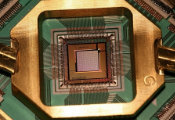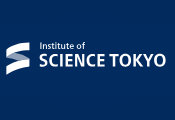Researchers in the UK have successfully tested a new technique for generating cold atoms for ultra-sensitive quantum sensing.
January 30, 2024 -- The team from the University of Birmingham tested the laser cooling method developed by Aquark Technologies which does not require an applied magnetic field and so could make quantum sensing systems more portable and robust and therefore easier to use commercially.
This technique, called Supermolasses, was tested in the UK Gravity Array project. This combines the supermolasses atom cloud generation with the expertise in quantum sensing of gravity at the UK Quantum Technology Hub in Sensors and Timing.
Cold atom-based quantum technology leverages group one or two elements, such as rubidium, in ultra-high vacuum conditions (>10-8 mbar) and precisely tuned lasers to confine and slow down atoms for the manipulation of quantum states of superposition and entanglement.
The project aims to deliver a new capability where a single laser and control system can be used to operate several low-power sensor heads. This would enable sensors to be located in remote or harsh environments, while drastically reducing the cost of the overall monitoring activity.
Working closely with Dr Chester Camm, Dr Alex Jantzen and Dr Andrei Dragomir at Aquark Technologies, the University of Birmingham team of Mr David Sedlak, Dr Sanaz Roshanmanesh, Dr Yu-Hung Lien and Prof. Michael Holynski were able to generate the first supermolasses not obtained by Aquark Technologies staff, successfully trapping atom clouds without applied magnetic fields.
The team are now continuing to characterise and independently assess the technique, before combining this with other approaches to realise a low-power sensor head with a plan for trials in late 2024.
These aim to further demonstrate the Aquark Technologies’ Supermolasses technique in a practical setting, with a view to applications in areas such as border control, infrastructure and environment monitoring, covert monitoring, and energy.
Aquark Technologies last year successfully demonstrated continuous trapping of cold atoms suitable for sensing while flying on a drone. This could be used for enhanced navigation, precise measurements and situational awareness.
The field trials with MBDA and flown by Wright Airborne Computing validated the trapping, cooling, and continuous operation of cold atoms while airborne on a quadcopter. The entire system, weighing less than 10 kg, withstood freezing temperatures, high humidity fog, and complex manoeuvres, operating for over an hour on internal power during full-day trials.
“Gravity Array is an incredibly exciting opportunity for Aquark as it demonstrates not only our strong desire to collaborate with the best, but also looks to utilise some of the new capabilities that makes our method of atom cloud generation unique and independently verify its benefits,” said Aquark Technologies Co-Founder and CEO, Dr Andrei Dragomir.
Professor Michael Holynski, Principal Investigator of the UK Quantum Technology Hub in Sensors and Timing and project lead of the Gravity Array project from the University of Birmingham, added: “It is fantastic to see progress on techniques that have potential for reducing the cost of quantum sensor systems. This work, made possible by funding from Innovate UK as part of the National Quantum Technologies Programme, has achieved first steps in validating techniques that could reduce the electrical power and operational needs of quantum sensors. This progresses along the Hub roadmap towards distributed sensor networks over large areas for applications such as environmental monitoring and monitoring of remote or hazardous locations.”




































